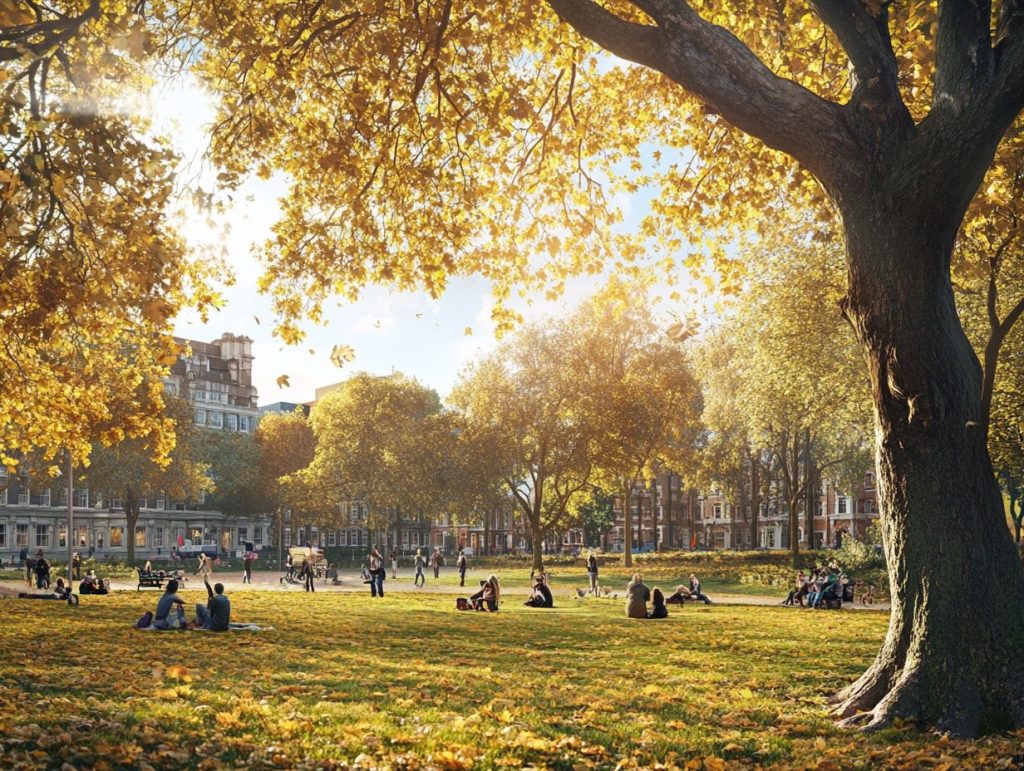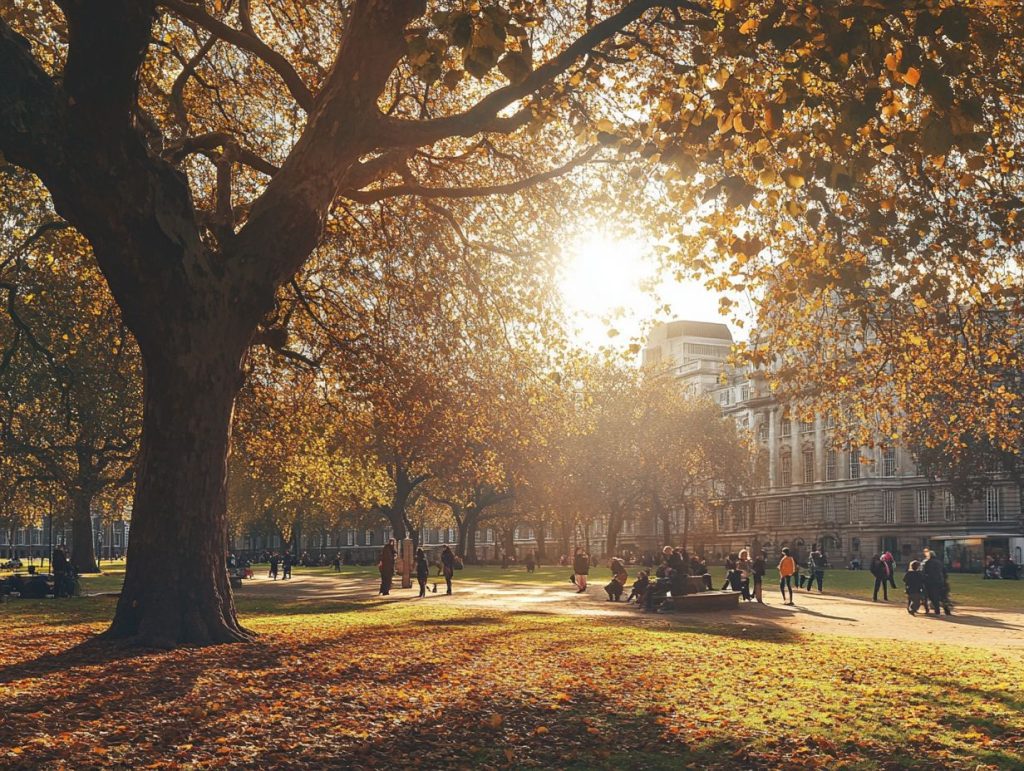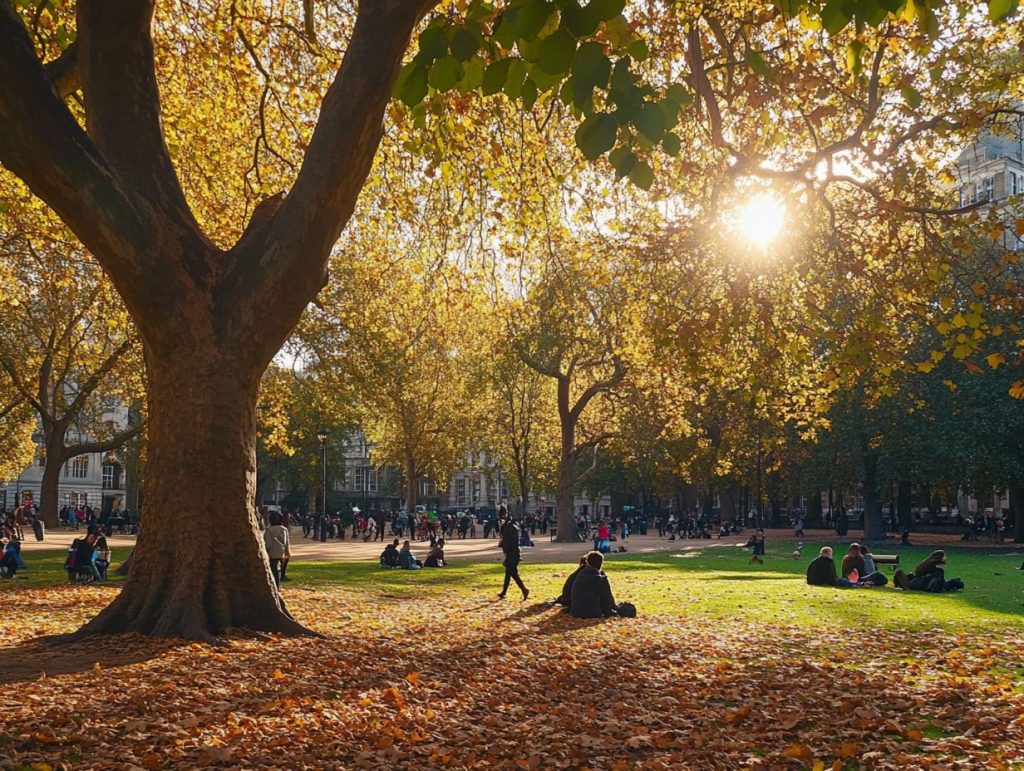Heritage trees are more than just beautiful elements of London’s landscape; they are living monuments that tell the story of our environment and culture. As we explore what qualifies a heritage tree, we uncover its environmental and cultural significance, threats from both human activities and natural events, and effective methods for its protection.
Learn how to identify and care for these majestic trees and discover ways to get involved in their preservation.

What Makes a Tree a “Heritage Tree”?
Heritage trees are quite remarkable. They hold significant historical, cultural, or ecological value in your community. In London, these trees aren’t just stunning; they act as living monuments that connect you to the past while boosting local biodiversity.
Their unique traits—such as age, size, and role in the landscape—make them crucial players in urban forestry and the ecosystem’s overall health. Preserving these trees is essential for maintaining your heritage landscapes and ensuring they thrive for future generations.
These majestic giants do more than stand tall; they are vital players in urban ecology. They provide shelter and food for various wildlife species, making them key to supporting local ecosystems.
Heritage trees also help mitigate urban heat, improve air quality, and manage stormwater—essential functions in bustling areas. By creating an environment where biodiversity can flourish, they contribute to a healthier city.
Thus, by safeguarding these trees, you’re preserving their beauty and benefits and reinforcing the deep connection between history, culture, and nature for future generations to enjoy.
The Importance of Preserving Heritage Trees
Preserving heritage trees is extremely important for maintaining the ecological balance and improving urban environments, particularly in a busy city like London. These trees contribute by aiding in carbon sequestration, providing habitats for various plants and animals, and playing a key role in urban forestry initiatives.
Their presence enhances public parks and green spaces, boosting biodiversity and promoting environmental stewardship. Furthermore, these trees’ cultural and historical significance unites the community, igniting advocacy for their protection and strengthening the push for sustainability in urban planning.

Threats to Heritage Trees in London
Heritage trees in London face numerous threats that could jeopardise their health and longevity, from human activities to climate change impacts. Urban environments often lead to soil compaction, pollution, and habitat destruction, all of which can seriously affect the vitality of these trees and the biodiversity surrounding them.
Furthermore, climate change brings challenges, such as shifting weather patterns that can leave trees more vulnerable to pests and diseases. Recognising these threats is essential for implementing effective tree management and protection strategies.
Human and Natural Causes
Both human and natural factors play a significant role in the declining health of heritage trees in urban areas such as London. Your daily activities—considering urban development, pollution, and even some uninspiring tree care practices—can affect soil health and disrupt the delicate ecosystems supporting these trees. Conversely, natural causes like storms, pests, and diseases can also threaten their survival and overall vitality. Understanding these factors is key to effective tree monitoring and management.
For example, a study by the Royal Parks found that over 60% of heritage trees showed signs of stress due to air pollution, which disrupts their ability to photosynthesise. And let’s not forget about pests like the oak processionary moth; they’ve caused serious defoliation in several London boroughs. Urban heat islands only exacerbate drought conditions, creating an even tougher environment for these trees to thrive.
Statistics indicate that over 10% of urban canopy cover is lost yearly, so city planners and environmentalists must adopt sustainable practices to protect and preserve this vital natural resource.

Methods for Protecting Heritage Trees
Protecting heritage trees takes a well-rounded approach that combines conservation strategies, community involvement, and robust environmental policy. In London, using tree preservation orders is a powerful way to safeguard these invaluable trees from premature removal or neglect.
Additionally, outreach programmes can help raise public awareness about why tree care matters and the ecological benefits that heritage trees provide. By getting the community actively involved in preservation efforts, you can help foster a culture of environmental stewardship and ensure these trees remain for the long term.
Conservation Efforts and Strategies
Effective conservation efforts for heritage trees require clever tree management and engaging the community. Strategies such as regular tree assessments, habitat restoration projects, and community gardens can boost tree health and resilience in urban areas. Partnering with local authorities and tree advocacy groups is critical to developing sustainable conservation strategies that benefit the trees and the surrounding ecosystems.
Local communities play a crucial role here, especially with initiatives such as tree adoption programmes, where residents care for specific trees. Look at the ‘Adopt-a-Tree’ projects in cities like San Francisco—they enhance the tree canopy and create a sense of ownership and pride among residents.
Hosting educational workshops can further strengthen these efforts by teaching people about tree biology, ecosystem services, and the importance of biodiversity. By working together, these programmes help create healthier urban environments and highlight the positive impact of community participation in conservation.
How to Identify and Care for Heritage Trees
Identifying and caring for heritage trees is about understanding what makes them unique and using the correct maintenance practices. By getting to know different tree species, you’ll be able to recognise their specific needs, including the best pruning techniques to keep them healthy and thriving.
Regularly checking their health and looking for signs of stress or disease is essential to preserving these valuable living resources in London’s urban landscape.
Tree Identification and Maintenance Tips
To effectively care for heritage trees, you need to implement proper maintenance practices and understand the specific needs of different species. Regular tree care activities—such as using the proper pruning techniques and keeping the soil healthy—are key to promoting strong tree health and a vibrant ecosystem.
Additionally, getting involved in environmental education initiatives gives you and your neighbours the power to impact the trees in your community positively.
By learning about the unique needs of various native and non-native species, you can tailor your care methods, whether monitoring water requirements or tackling pest issues. Simple techniques, such as mulching around the base of trees, help conserve moisture and improve soil quality, leading to stronger roots.
Organising community workshops or tree care days is a great way to bring people together and foster a sense of stewardship. It creates a shared responsibility for maintaining these vital resources. Through these initiatives, you and your community can protect heritage trees while nurturing a lasting appreciation for nature.
Community Involvement in Preserving Heritage Trees
Community involvement is key to preserving heritage trees because it creates a shared sense of responsibility and advocacy for these important natural resources. By engaging residents in planting initiatives and citizen science projects, you can boost public awareness about the benefits of heritage trees and encourage everyone to participate actively in their care.
Furthermore, collaborating with tree advocacy groups can strengthen your efforts to protect these trees through outreach and education programmes, ensuring they are around for future generations.
Ways to Get Involved and Make a Difference
You have countless opportunities to get involved and make a real difference in preserving heritage trees. Volunteering at community gardens, joining local advocacy groups, or participating in urban greening initiatives can boost biodiversity and raise public awareness. Hosting educational events or workshops can inspire others to engage in environmental stewardship and advocate for the protection of these historic trees.
You can take simple yet impactful actions, such as organising tree planting campaigns or awareness drives in local schools and neighbourhoods. Sharing success stories on social media helps highlight the importance of preserving these natural treasures. Furthermore, working with local authorities can improve policies protecting heritage trees.
Partnering with environmental organisations can expand your reach and create a united front for tree preservation efforts. By actively engaging in these initiatives, you contribute to the ecological health of your community and help ensure that future generations can appreciate and enjoy these invaluable assets.